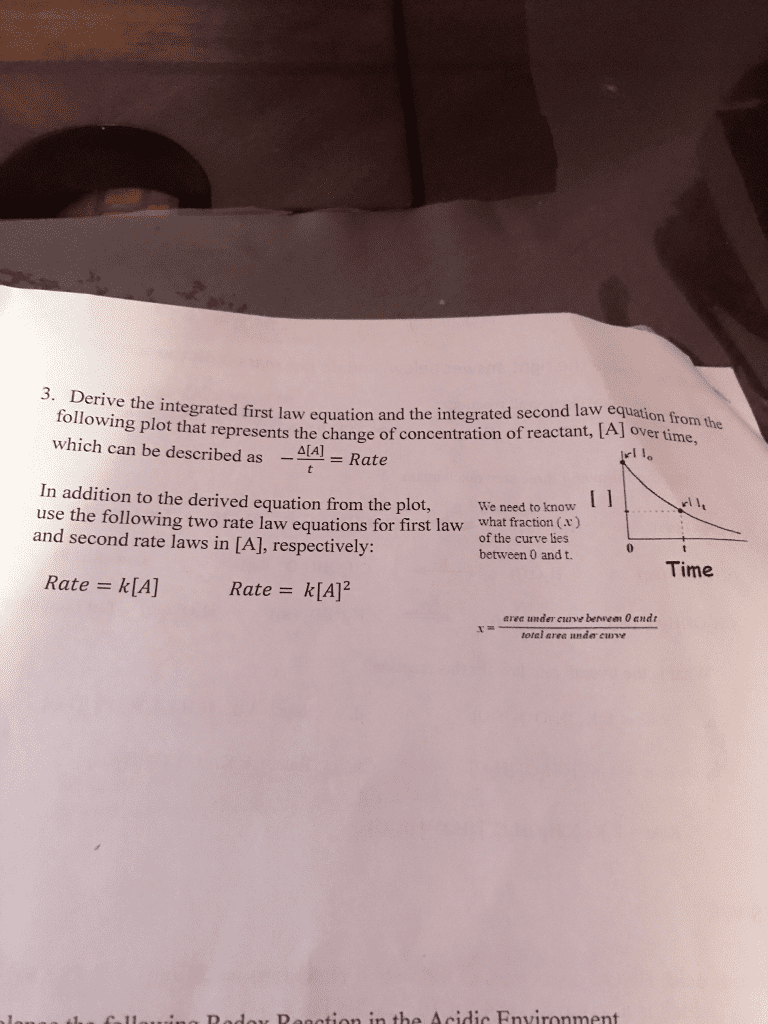CHEM 112 Chapter 14: section 14.4
Document Summary
Integrated rate laws: mathematical equations can be derived that show the relationship between the concentration of the reactant and time. [a]0= initial concentration of a (at time =0) [a]t = concentration of a at time t. Integrated rate laws can be used to calculate the concentration of a reactant after some time has passed, the amount of time required to reduce an initial concentration to some amount, or the rate constant for a reaction. Integrated first-order rate law: ratio [a]t/[a]0 is a unitless quantity that is equal to the fraction of reactant that remains unreacted. Reactions can be rewritten in the form of an equation for a straight line, y=mx+b. Use rearranged rate law equations to graphically determine reaction order and the rate constant for a reaction by following these steps. Collect concentration- time data for a reaction at some temperatures. Plot the concentration-time date three different ways:


